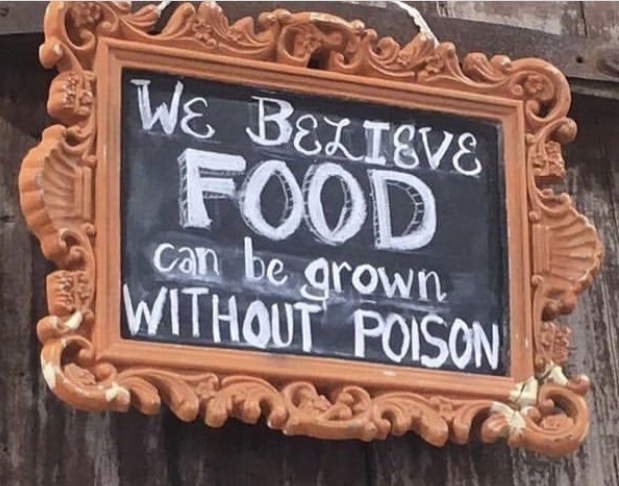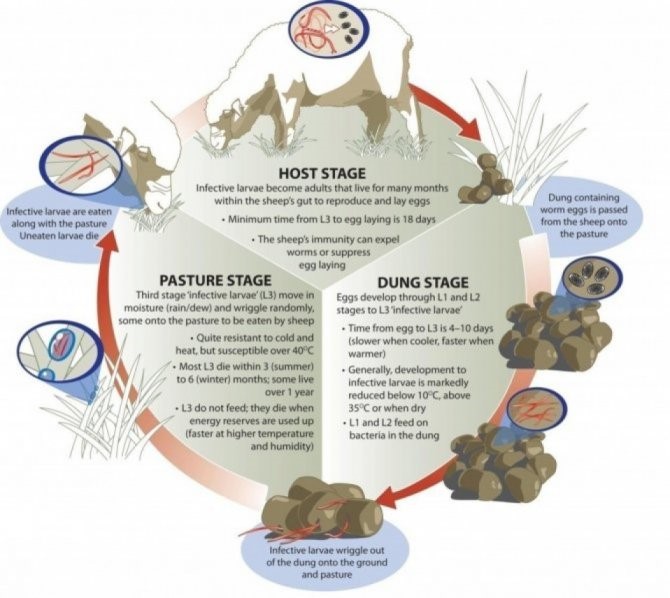There are no organic silver bullets out there, but dealing with internal and external parasites in your livestock can be done especially when you tackle it on a few different fronts.
- Worm on a full moon
If you Google Worming and the Lunar cycle you’ll find a tonne of info – mostly anecdotal and very interesting. We’re not sure if there is science behind it but if you ever see parasites in manure it’s normally around a full moon which suggests that parasites are moving (and therefore more vulnerable) around the full moon.
W have been using the moon as a guide for a few years now and definitely find it more effective. If nothing else, using the moon is a simple monthly reminder!
What to worm with? We use copper sulphate in stock waters, not enough to turn the water blue as then animals will find the water unpalatable. Copper can be toxic in large amounts so adding in lead up to full moon prevents the risk of over doing it.
Garlic, pumpkin seeds, apple cider vinegar, biochar, Sulphur, diatomaceous earth have also all been cited as having anti-parasitic properties – we haven’t tested them yet so can’t vouch for their efficiency but would love to hear any feedback from those that do.
- Weeds are your friends
There are plenty of weeds out there that are considered ‘toxic’ to animals including Lantana, Tobacco bush and Parthenium. The accepted action is to do everything possible and by whatever means necessary to eliminate these weeds from your property.
But are we shooting ourselves in the foot? Just because a plant is toxic in large amounts does not mean it is not beneficial in small amounts. The medicinal qualities of plants is a completely fascinating subject that deserves much more investigation and detail than we can give it here. But suffice to say animals can and do have a munch on ‘weeds’ every now and then – we have seen it – with no ill effects.
This link is to a very interesting Nordic study examining the worming potential of wild plants/weeds.
But the BIG caveat here is – If an animal is hungry because it does not have enough to eat then it will eat things that in large quantities are harmful. Animals will need to be excluded from paddocks containing weeds if there are no other desirable species there in abundance. It is absolutely imperative as land managers that we manage for what we want which is pasture mainly comprised of palatable, leafy grasses and herbage. Put your focus there and the weeds will largely take care of themselves.
Think of it like a big green salad for us – we don’t want an entire salad made of bitter greens but a small element adds interest, flavor and health benefits.
Here is a link to a bonus article on what cattle eat and why – it blew our minds a little!
We haven’t even touched on weeds as messengers of pasture deficiencies or weeds as tools in pasture regeneration. They’ll have to be topics for another day.
- Rotation Rotation Rotation
There are so many reasons why time managed grazing of your pastures is important – and if you do nothing else but take this message away with you, you will be ahead. From a parasite point of view though, parasites need a host to complete their life cycle.
When animals have constant access to the same ground it is impossible for them to avoid infection by worms as the above graph shows. The simple act of moving animals onto fresh pasture and not returning them to the old pasture for a period of time WILL BREAK THE WORM CYCLE.
In cattle we have always worked on an absolute minimum 3 week rotation (it varies with time of year) with good effect but some parasites can survive longer. Survival is related to heat and moisture. See graph below showing Barbers Pole (bane of sheep and goat producers) survival rates based on temperatures.

A roll of electric braid, some portable posts and an electric fence energizer is a cheap way to break up your paddocks. It might seem like a lot of work but the benefits of doing so (did we mention there are far more benefits than just parasite control?) will far outweigh the small amount of effort required.
- Diatomaceous Earth – used externally
Look at Diatomaceous Earth (DE) under a microscope and you’ll see tiny jagged edges. These edges desiccate the exoskeleton of insects (like buffalo fly) so that the dehydrate and die. Absorbacide is a super fine DE that is registered as an organic insecticide. It is very effective at killing flies. The issue with it though is that it only gives short term protection as it topical only. That’s why we invented the BOS BAG – a simple dispenser that allows cattle to self-apply which they work our very quickly how to do. It really is that simple.
- Breeders for environment, Bulls for market
The hard truth is some animals will never prosper in coastal, ticky areas. You can supplement and take all the steps mentioned here and that will most certainly help but if you want to eliminate chemicals from your food chain then you need to let Nature do some of the heavy lifting for you and choosing animals to suit the environment is probably the easiest way to do that. But the common response we hear all the time to this idea is that tough cattle have tough meat. Well not necessarily but again that is a topic for another day. In the meantime an effective strategy is to –
Choose breeders (females) that are more tick and fly resistant. Your Bos Indicus or African originating breeds often have these attributes.
Choose bulls that will give the meat quality you are chasing. Your Bos Taurus or British Breeds with carcass yield generally coming from the European breeds.
A mix like this should give you the best of both. There are composites and crossbreeds out there already where the mix has been made and you get the benefits of hybrid vigor. There’s as much variation within breeds as between them so generalizing is difficult so ultimately you must pay attention to what’s going on in your paddock. EBV’s (Estimated Breed Values) are an excellent tool for helping to choose a sire as it effectively rates animals against the breed average.
- Add a Pony
I know we said 5 tips – this one is a bonus for sheep and goat owners. Horses are not affected by the same parasites as sheep and goats so running a pony with your animals (or in a rotation that follows them) will tackle larvae. The horse eats infected grass but the larvae is not viable in their systems so does not survive to affect your sheep/goats and causes absolutely no harm to your horse.
Species diversity happens in nature – indeed nature depends on it. It is unlikely that anyone fully understands the complex symbiotic relationships that exist in nature but doing what we can to mirror natural patterns underpins the concept of regenerative agriculture.

The above list is just the tip of the iceberg – come and see us at Bos for more in-depth information on the above plus a whole lot more that we couldn’t squeeze into this list.
Finally, to bring you this information takes time and energy, trial and error in the paddock with livestock. We practice what we preach and continually strive for more and better solutions for you. You can help us to continue to bring you this information by supporting us with your business. If you’re looking for fencing, water infrastructure, feed, supplements, seed, fertilizer, crop protection and animal husbandry gear at competitive prices please come and see us. There’s a whole lot more for you in store too!
Thanks for reading and being part of the solution. We believe food can be grown without poison.

